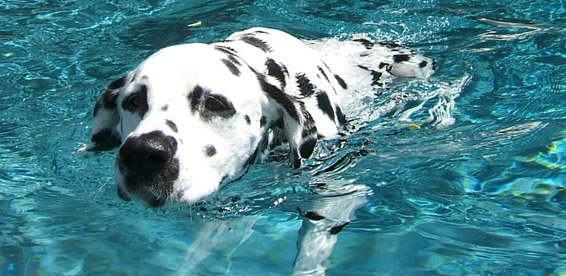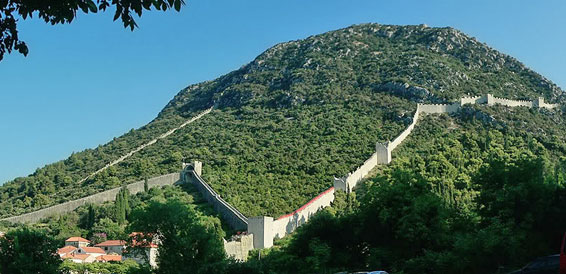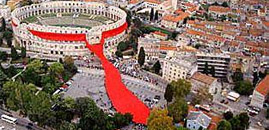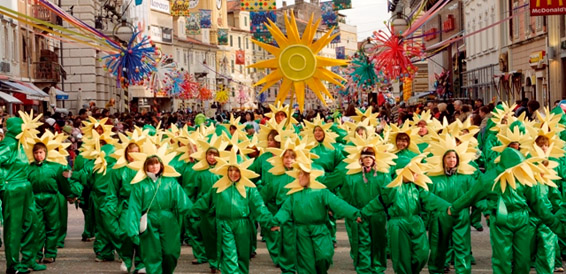
Did you know?
• The famous Dalmatian dogs originally came from Croatia’s region of Dalmatia. Thanks to thier eye-catching white fur and black spots, Dalmatians are amongst the most popular dogs in the world.
• The necktie, worn by businessmen around the world, was invented in Croatia and is locally known as the "kravata". To celebrate World Tie Day, a huge necktie is tied around the Arena in Pula, Istria.
• The oldest communal theatre in Europe was built in Hvar in the year 1612.
• The smallest cathedral in the world is located in Nin, near Zadar.
• The city of Ston has the longest walls in Europe, and the second longest in the world, after the Great wall of China. Once 7km long they hold 40 towers and 5 forts.

• First hydro power plant in the world was Iskrice, built in the city of Sibenik, on Krka river, in 1895.
• The parachute was invented and first trailed by the Croatian Faust Vrancic in the 17th century, who was also the designer of the first wind turbine.
• The city of Zadar is home to the world's first Sea Organ that creates the music using the wind and waves.
• Although it has a population of only 23 people, Hum in Istria, Croatia is officially a town and the Guinness World Record holder for the smallest town in the world.
• The largest truffle in the world was found by Giancarlo Zigante in 1999, near Buje, Croatia. It was 19.5cm long, 12.4cm wide and 13.5cm tall.
  |
• Croatia has 7 UNESCO World Heritage Sites: Old City of Dubrovnik; Historical Complex of Split with the Palace of Diocletian; Plitvice Lakes National Park; Episcopal Complex of the Euphrasian Basilica in the Historic Center of Porec; Historic City of Trogir; The Cathedral of St. James in Sibenik; and Stari Grad on Hvar Plain.
• Dubrovnik, an independent state at the time, was the very first nation to formally recognize the United States as an independant nation.
• The White House was built of Croatian stone, from the island of Brac, as well as the New Palace (Vienna, Austria), the Parliament building (in Vienna, Austria), the Parliament Building (Budapest, Hungary) and the palace of Roman emperor Diocletian (Split, Croatia).
• There is a Ulysses' cave on the island of Mljet. It was named after a story which says that a famous adventurer stranded on the nearby cliff Ogiron, where he met the nymph Calypso with whom he fell in love, and spent unforgettable moments in her company.
• The carnival in Rijeka is not only the biggest in Croatia but also one of the most attractive carnivals in Europe! Over 100,000 merrymakers witness the main parade, made up of around 150 colourfully costumed groups from different countries.

• Agatha Christie spent her honeymoon in Dubrovnik.
• Marco Polo, the world-renowned 13th century adventurer, traveler and merchant, is belived to be born in 1254 on the Dalmatian island of Korcula. Even today, there are many people on the island bearing the same family name.
• In its summer issue US women’s magazine Marie Claire has declared Dubrovnik’s Banje beach to be ‘the third most beautiful beach’ in the world.
• National park Starigrad - Paklenica, park of nature mountain Velebit and Zrmanja river have been used as shooting locations for the famous movie Winnetou.
• Croatia’s currency, kuna, was named after a small agile animal with brown fur, marten in English, based on the use of marten pelts of value in medieval trading.
• Would you like to touch a sculpture old more than 4,000 years? Come to Split and see the Sphinx of Egypt by the Roman Emperor Diocletian's palace in the center, brought out of Egypt.
• Croatians have their own alphabet or set of letters. It is called Glagolitic and emerged in the 9th century and was in daily use, along with the Latin alphabet, up to the 18th century.
